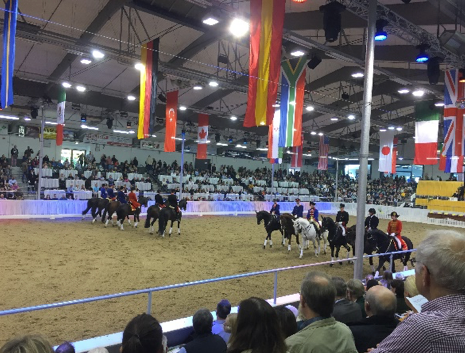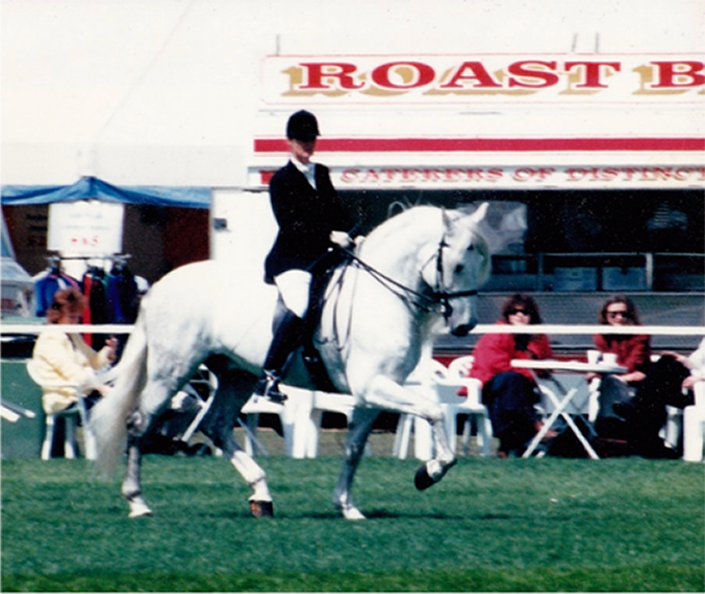British Dressage Convention
I made a trip about two weeks ago, to Bury Farm, to see the third British Convention put together by Richard Davidson and Carl Hester.
The first presentation was by the Australian Tristan Taplin (I do hope I have the surname right!) He specialises in training horses to be bombproof for competitions. He must have been a regular at the Convention as a friend on Facebook has sent me a video of him riding a comedy act at an earlier one.
His rider was on a Grand Prix horse and coped very well with flag waving, bangs and crashes and walked onto the white sheet on the ground, in a relaxed and submissive way. However he was no so successful when the audience, us, clapped and really never settled.
The main points were,
1 When the horse freezes with fear, move it sideways on the left circle to get the hind leg to cross over and take the weight.
2 Have no rein contact so that there is no restriction.
3 Do not push with the leg as this re-enforces the fear.
4 Get the sequence correct. If a drama let go-do not push-and in a moment of quiet-reward and move forward.
Points for clipping
1 when the horse relaxes from the clipper noise, turn them off as a reward.
2 Do not tie the horse up as this is a restriction.
Michael Klimke
Is a Selector to the German Team, and who is still taking criticism for the selection of Tortilas, for the European Team. He gave Suzanne Lavendel a lesson on a nine year old stallion by Di Magio.
His emphasis was on spending a lot of time warming up.
1 Firstly, ride long and low in trot and canter.
2 Then mix the rising and sitting trot to bring the horse up on the rein.
3 Ride lots of transitions in which the rider, must never pull, and the whole horse must come back and carry the weight.
4 The rider must control the horse through the seat until he goes in self carriage and forward. If the horse is not quick enough then the seat activates the hind leg, as the legs have another job to do.
5 Do not allow passage as an evasion, and use leg yield with good crossing to improve the cadence.
6 Lastly at the end of work, stretch and rest the horse, maintaining the outside rein with the inside leg on.
I enjoyed this session, probably because those who work with me have heard this before!
Then we had Richard Davidson working with the efficient Nicola Buchannan and the main points of this lesson were that the trainer does not need to say everything he sees.(a good lesson for me).
In the warm up the base of the neck should be stretched and not the poll and riding deep does not mean that the horse has stretched!
Canter flexes the back muscles and makes the core muscles work.
Use different leg aids to get different results, and in rising trot, maintain the short steps and lightness.
Carl Hester then helped a young lady on around short little horse that with a stallion neck liked to curl up and tip forward. He had the horse on a circle in shoulder in to help the frame go uphill, then he opened the neck forward. He said not to use the leg, as this will tip the horse downhill. The rider must resist the temptation to over ride, but to ride forward-slowly. (We heard this comment in Denmark from Lars Petersen)
Half halts should be uphill with the hand forward, and the rider must sit in the middle of the horse to make the horse straight. The last was that if you ride something well then have a break, and if not, do it again.
Next time a write I will have observations from the GDF in The Netherlands.


